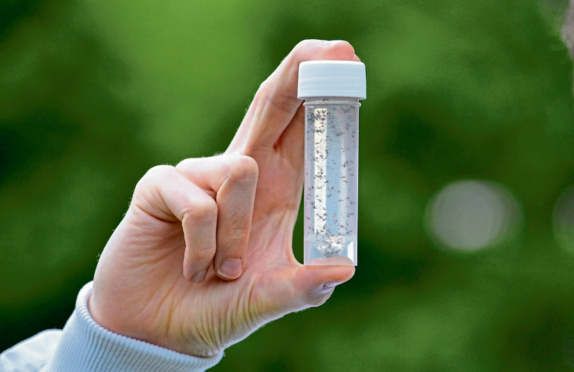The first hatches of midges for the year have been reported – but they are unseasonally late because of the recent cold prevailing easterly weather.
Ahead of the launch of this season’s official midge forecast this weekend, expert Dr Alison Blackwell said the first reports of early midges were logged on Saturday.
“The first emergers are usually a few weeks earlier than now, but the weather has affected midges, just like other wildlife,” she said.
“And also unusually the first reports have come from the East Coast, including Dundee of all places. People are saying they are getting bitten there.
“We expect the first big hatch to occur at the end of the month and with it warming up we expect it to be big.”
The news will not be greeted with joy by the country’s tourist operators. The Scottish tourism industry is estimated to lose about £286 million-a-year because of the voracious and swarming insects.
A previous study also found that many tourists said they would not return to Scotland at the same time of year because of midges.
“They are pretty adaptable in surviving all kinds of conditions as we have seen. They know how to survive. They’ve done it for thousands of years. They survived the last Ice Age after all,” said Dr Blackwell.
Dr Blackwell, director of Dundee-based APS Biocontrol Ltd – makers of anti-midge repellent Smidge – added:”The first egg batches are laid autogenously – this does not required a blood feed – and there are relatively high levels of mortality throughout the cycle.
“So not all females make it to biting point, so to speak. But we think around 21 billion will seek a blood meal during the season.”
The larvae of Culicoides impunctatus – the scientific name for the Highland biting midge – winter in the soil and usually begin to emerge as adults in May and June the following year. These adults then lay eggs that develop relatively quickly to give a second emergence of adult midges in July.
Two million midges weigh just a kilo – and one square metre of land will contain about 500,000 of the insects.
The flying midge lives for between two days and two weeks depending on weather conditions. During this time the female can lay up to 170 eggs in as much as three batches. In a normal year there are two to three generation of midges born during the season.
“To get rid of them you would have to change Scotland’s landscape – and that is not going to happen. I am afraid they are here to stay,” said Dr Blackwell.
